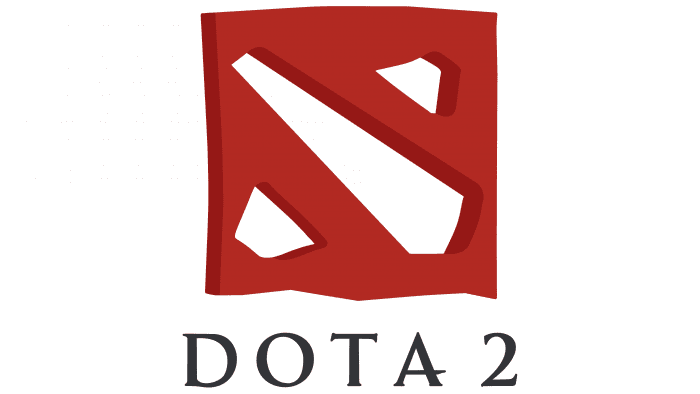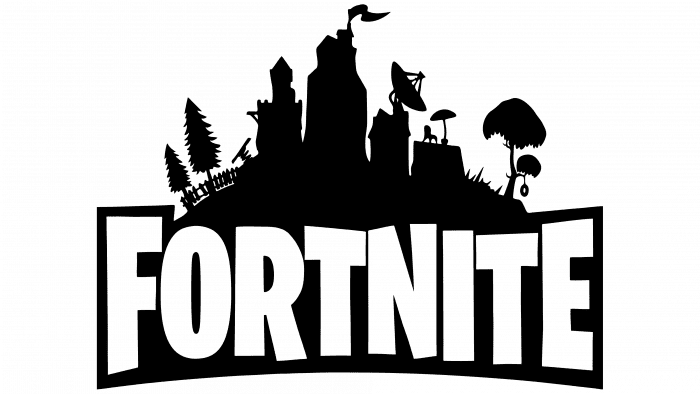The Club Penguin logo represents a vibrant virtual world where players can engage in imaginative play, socialize, and embark on exciting adventures. It serves as a visual representation of the game’s brand identity, capturing the essence of Club Penguin’s fun-filled and engaging experience.
The Club Penguin logo was created to commemorate the game’s 7th anniversary and was used until the game’s closure in 2017. It features the game’s title, designed with disproportionate letters that appear convex due to their curved lines. The first word is colored in two tones: white and light blue, with additional bright blue outlines. The second part of the inscription utilizes a yellow-orange gradient. The phrase “CLUB PENGUIN” is enclosed by a thin black border, adding emphasis to the text. Positioned at the top is the Disney trademark, indicating that the game belongs to The Walt Disney Company.
The meaning behind the Club Penguin emblem is multi-faceted. The disproportionate and convex lettering style conveys a playful and whimsical atmosphere, appealing to the game’s young target audience. The combination of colors, including white, light blue, and yellow-orange, evokes a sense of fun, joy, and adventure. The use of the Disney trademark further emphasizes the game’s affiliation with a reputable and beloved entertainment company, instilling confidence and trust among players and parents.
Club Penguin: Brand overview
| Founded: | October 24, 2005 – March 30, 2017 |
| Founder: | Disney Canada Inc. |
| Headquarters: | Kelowna, Canada |
In October 2005, the world of online gaming was transformed with the advent of Club Penguin, a delightful creation from New Horizon Interactive. This massively multiplayer online game immediately resonated with people of all ages, charming them with its entertaining and immersive world.
Club Penguin extended an open invitation to venture into a whimsical penguin universe, prompting players to craft their unique avatars and participate in the lively escapades. Whether it was the thrill of a heated ice hockey duel, the playful antics of a snowball fight, or the spirited energy of a dance-off, Club Penguin offered a rich tapestry of experiences. Progress through the game was marked with the reward of virtual coins, enabling players to keep their avatars in step with the latest fashions.
The game’s rising popularity caught the attention of Disney, leading to a high-profile acquisition in March 2006 for an estimated $350 million. The Club Penguin community continued to flourish under Disney’s stewardship, bolstered by its developers’ unwavering commitment to creating a safe environment. By employing stringent moderation policies and equipping parents with control features, Club Penguin maintained its integrity as a secure and enjoyable digital playground for children.
The allure of Club Penguin was further magnified with the introduction of a host of features and mini-games over the years. Players relished opportunities to embellish their igloos, participate in grand parties, and partake in festive holiday celebrations. Regrettably, in early 2017, the creators announced the discontinuation of Club Penguin to pivot their focus to other ventures.
The cessation of Club Penguin marked the end of a cherished chapter in the realm of online gaming. Despite its conclusion, the game’s legacy continues to resonate. Its dedication to a safe and creative platform fostered a vibrant community that transcended the confines of the game itself. The memories made, and friendships formed in Club Penguin’s snowy landscapes will forever hold a special place in the hearts of its players.
Meaning and History
The essence of the brand was its ability to create a vivid, welcoming, and safe environment for children. Its identity was rooted in its unique virtual world, where players could embody adorable penguin avatars. The playful, cartoon-like graphics and the vibrant color palette were designed to appeal to the young demographic, while the overall environment promoted inclusivity and creativity.Club Penguin’s branding went beyond the game itself; it was about cultivating a community. The focus was on fostering a space that encouraged positive interaction, friendship, and creativity among users. The platform introduced unique codes of conduct and strict moderation rules, highlighting its commitment to creating a secure, kid-friendly environment.
Ultimately, the game’s brand identity mirrored its mission: to provide an engaging, safe, and fun online space for young users. Its branding—centered on its playful penguin mascot, bold colors, and snowy, joyous world—appealed directly to its audience, leaving an indelible mark in the realm of online children’s entertainment. Even after its cessation, Club Penguin is fondly remembered as an innovative pioneer of MMOs for kids.
What is Club Penguin?
Club Penguin was an iconic massively multiplayer online game (MMO) that provided a captivating virtual world packed with engaging games and activities. It served as a prominent platform for young audiences to interact, make friends, and participate in numerous in-game events.
Originating as a small startup, the brand swiftly captured the hearts of young netizens, evolving into an online phenomenon. With Disney’s acquisition, it further expanded its reach, providing a safe, interactive space that placed a strong emphasis on community and creativity. Despite its closure, the spirit of the game lives on, with its name synonymous with one of the earliest immersive virtual experiences for children.
2000
2003 – 2005
2005
2005 – 2007
2007 – 2008
2008 – 2012
2012 – 2017
The Club Penguin logo is a vivid representation of the game’s playful, lively atmosphere aimed at a younger demographic. The letters in the logo have a warped, bulbous quality that gives the text a sense of depth and whimsy. This distortion of the text, along with the bright and contrasting colors of light blue and white for ‘CLUB’ and a gradient of yellow-orange for ‘PENGUIN,’ appeal to the sense of fun and adventure the game is known for.
A thin black outline around the ‘CLUB PENGUIN’ text further enhances its boldness and visibility. Above the logo, the Disney branding is seen, signifying the game’s association with The Walt Disney Company and giving it a stamp of trusted quality entertainment for children.
Club Penguin color codes
| Raisin Black | Hex color: | #261f20 |
|---|---|---|
| RGB: | 38 31 32 | |
| CMYK: | 0 18 16 85 | |
| Pantone: | PMS Neutral Black C |
| Spanish Sky Blue | Hex color: | #06a1e6 |
|---|---|---|
| RGB: | 6 161 230 | |
| CMYK: | 97 30 0 10 | |
| Pantone: | PMS 801 C |
| Uranian Blue | Hex color: | #bfe9fb |
|---|---|---|
| RGB: | 191 233 251 | |
| CMYK: | 24 7 0 2 | |
| Pantone: | PMS 635 C |
| Orange Peel | Hex color: | #f89d0e |
|---|---|---|
| RGB: | 248 157 14 | |
| CMYK: | 0 37 94 3 | |
| Pantone: | PMS 137 C |
| Golden Yellow | Hex color: | #fee304 |
|---|---|---|
| RGB: | 254 227 4 | |
| CMYK: | 0 11 98 0 | |
| Pantone: | PMS 108 C |











